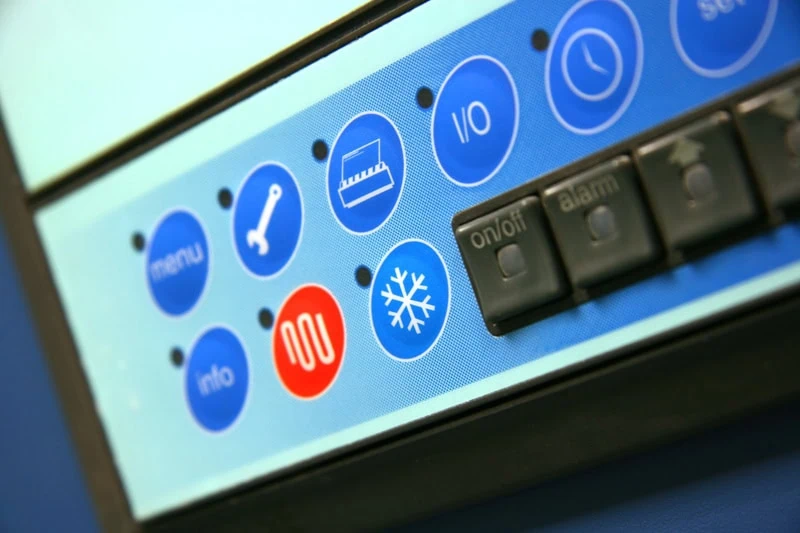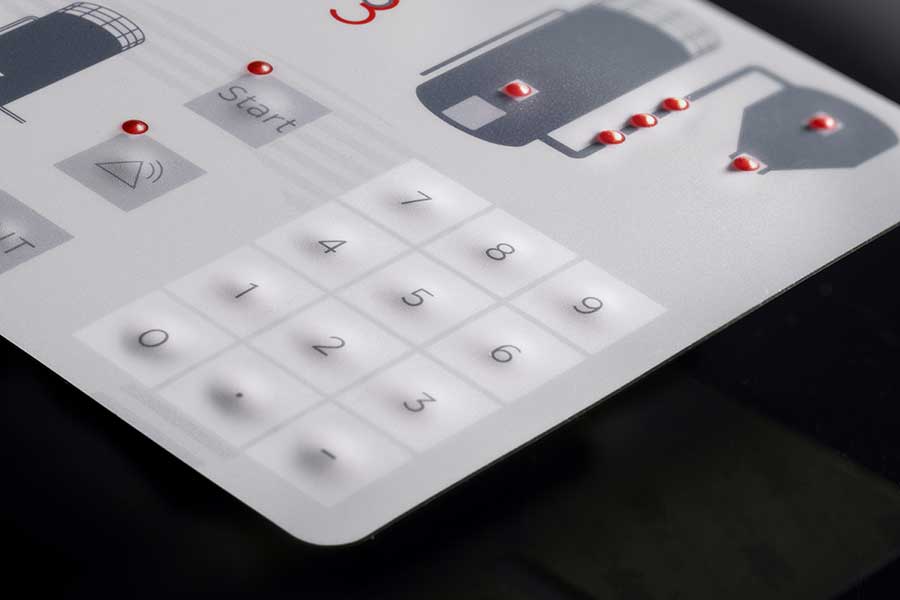Membrane Layer Switches Explained: A Comprehensive Overview to Their Advantages
Membrane changes represent a sophisticated and flexible remedy for creating customer interfaces across a variety of industries. As industries significantly look for reliable and reputable control user interfaces, understanding the certain advantages and applications of membrane layer switches becomes vital.
What Are Membrane Switches?

When stress is applied to the membrane layer switch, the layers make call, finishing an electric circuit. This easy system permits a large range of applications, from customer electronic devices to commercial machinery. Membrane switches are usually developed to be immune and water resistant to dust and impurities, making them ideal for atmospheres where durability is crucial.
Furthermore, the flexibility of the products used in membrane layer switches over promotes ingenious designs that can comply with different shapes and measurements. This adaptability contributes to their popularity in diverse areas, consisting of clinical devices, automobile controls, and home devices. Generally, membrane layer switches represent a critical aspect in modern-day individual interface technology, connecting the void in between customers and electronic systems.
Trick Advantages of Membrane Layer Switches
Amongst the myriad of individual interface alternatives offered, membrane changes stick out for their special combination of benefits. One of the key benefits is their portable and light-weight layout, which enables for assimilation right into a broad range of devices without including significant mass. This is especially beneficial in applications where space is restricted.
Additionally, membrane layer changes deal durability and resistance to environmental variables. They are usually built with materials that can withstand moisture, dust, and various chemicals, making them suitable for harsh problems. This sturdiness adds to a longer lifespan contrasted to conventional mechanical buttons.
One more significant benefit is the flexibility in modification. Membrane switches can be published with numerous graphics, colors, and textures, permitting tailored designs that meet specific branding or practical demands. This flexibility encompasses the number of layers and circuit options, providing engineers with several setups.
Furthermore, the tactile comments offered by some membrane layer switches enhances individual experience, making them more user-friendly to run. Finally, the ease of cleaning and upkeep better solidifies membrane layer buttons as a sensible choice in both customer and commercial applications. Membrane Switches. Overall, these vital benefits make them a favored service for lots of developers and manufacturers
Applications in Numerous Industries
Just how do membrane buttons find their place throughout varied industries? Their convenience and performance make them indispensable components in sectors varying from healthcare to customer electronics. In clinical devices, membrane layer switches are used for their convenience of cleaning and resistance to contamination, ensuring health in settings where sterility is important.
In the consumer electronic devices industry, these buttons give sleek, straightforward interfaces that improve item looks while preserving toughness versus this link damage. Automotive applications gain from membrane switches over also, where they are made use of in control panels and control board, using dependable efficiency in tough conditions.
Furthermore, commercial machinery uses membrane layer switches for control board because of their effectiveness, ability to stand up to harsh atmospheres, and customizable styles that accommodate specific functional requirements. The food market leverages membrane layer buttons for their convenience of usage and resistance to spills, guaranteeing operational effectiveness in fast-paced setups.
Ultimately, the versatility of membrane layer switches across these diverse applications emphasizes their necessary function in modern technology, boosting customer communication while fulfilling industry-specific needs. Their continued evolution promises additional integration right into emerging fields and ingenious products.
Style and Modification Choices
The layout and customization alternatives available for membrane layer buttons are crucial for customizing user interfaces to satisfy particular individual needs and visual choices. These switches can be designed in numerous forms, dimensions, and formats, permitting seamless combination into diverse applications. The versatility in design means that producers can develop unique user interfaces that improve use and keep brand identity.
Personalized colors, appearances, and graphics can be used to the surface area of the membrane button, offering a possibility for branding and customer interaction. Furthermore, backlighting choices, such as LED illumination, can be incorporated to enhance presence in low-light conditions, therefore enhancing functionality.
Practical components can additionally be customized, consisting of tactile comments and actuation force, which can be adapted to important source suit different customer interactions. The choice of products, such as polyester or polycarbonate, enables for variations in longevity and ecological resistance, dealing with the certain needs of various industries.
Eventually, the comprehensive design and customization capacities of membrane layer switches make it possible for companies to produce aesthetically appealing and easy to use interfaces, ensuring that their products meet both aesthetic and functional demands properly. Membrane Switches.
Considerations for Application
Carrying out membrane changes requires careful consideration of numerous elements to guarantee ideal capability and individual experience. Among the main factors to consider is the intended application environment. Factors such as direct exposure to moisture, severe temperature levels, and chemical substances can dramatically influence the switch's efficiency and longevity. Choosing materials that endure these problems is vital.

One more crucial facet is the button's layout and format. pop over to this site Making certain that the tactile feedback and actuation force line up with individual assumptions enhances use. Performing customer testing can offer valuable understandings right into the ideal style.
Additionally, compatibility with electronic components need to be evaluated. The switch's wiring ought to straighten with the overall system design, ensuring trusted signal transmission and minimizing interference.
Furthermore, production methods and prices must be reviewed. The selection in between personalized layouts and standard models can lead and influence both spending plan time.
Lastly, consider repair and maintenance. Membrane buttons may need details cleaning and treatment procedures to keep their appearance and functionality over time. By attending to these factors to consider, companies can apply membrane layer switches that fulfill their operational demands while offering a positive user experience.

Conclusion
In final thought, membrane layer switches represent a long lasting and versatile control user interface suitable for a wide array of applications throughout multiple industries. Membrane Switches. As innovation continues to develop, the importance of membrane layer switches in modern devices continues to be considerable, using both functionality and aesthetic allure.
Membrane layer switches represent a flexible and innovative service for developing customer interfaces across a selection of sectors.Understanding the basic elements of modern electronic interfaces, membrane layer buttons are a type of customer interface gadget that are composed of adaptable, thin layers of product. In general, membrane switches over represent a crucial component in modern-day customer interface innovation, linking the gap in between customers and digital systems.
Among the myriad of user interface choices available, membrane layer switches stand out for their special combination of benefits.The design and modification alternatives readily available for membrane layer buttons are essential for tailoring user interfaces to meet specific user demands and visual preferences.